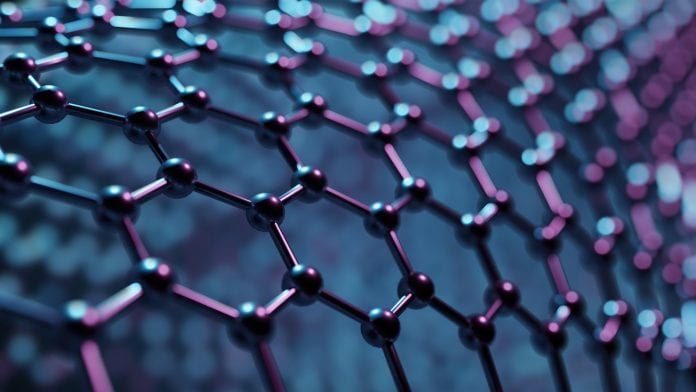
New research has shown that graphene is able to act on excitatory synapses and interfere with the development of anxiety-related behaviours.
Carried out by SISSA – International School for Advanced Studies of Trieste, Catalan Institute of Nanoscience and Nanotechnology (ICN2) of Barcelona, and the National Graphene Institute of the University of Manchester, in the framework of the European Graphene Flagship project, the research has shown that the nanomaterial graphene has the ability to interact with the functions of the nervous system in vertebrates in a very specific manner. The researchers say that the material interrupts the build-up of a pathological process that lead to anxiety-related behaviour.
The study ‘Graphene oxide prevents lateral amygdala dysfunctional synaptic plasticity and reverts long lasting anxiety behaviour in rats‘, has been published in Biomaterials.
Graphene flakes
Study leader, Laura Ballerini of SISSA, highlighted that previous research has shown that when graphene flakes are delivered to neurons, they interfere spontaneously with excitatory synapses by transiently preventing glutamate release from presynaptic terminals.
She said: “We investigated whether such a reduction in synaptic activity was sufficient to modify related behaviours, in particular the pathological ones that develop due to a transient and localised hyper-function of excitatory synapses”.
This approach would fortify the strategy of selective and transient targeting of synapses to prevent the development of brain pathologies by using the precise medicine treatments. The team tested the hypothesis by looking at post-traumatic stress disorder (PTSD) and carrying out the experiments in two phases, in vivo and in vitro.
Audrey Franceschi Biagioni of SISSA, the first author of the study, said: “We analysed defensive behaviours caused in rats by the presence of a predator, using the exposure to cat odour, to induce an aversive memory. If exposed to the predator odour, the rat has a defensive response, holing up, and this experience is so well-imprinted in the memory, that when the animal is placed in the same context even six days later, the animal remembers the odour of the predator and acts the same protective behaviour.
“This is a well-known and consolidated model, that we used to reproduce a stress behaviour. Exposure to the predator can modify neuronal connections – a phenomenon that is technically known as plasticity – and increases synaptic activity in a specific area of the amygdala that therefore represented the target of our study to test the effects of the nanomaterial”.
Ballerini added: “We hypothesised that graphene flakes that we showed to temporarily inhibit excitatory synapses (without causing inflammation, damage to neurons or other side effects) could be injected in the lateral amygdala when the plasticity associated with memory was consolidated. If the nanomaterial was efficient in blocking excitatory synapses, it should inhibit plasticity and decrease the anxiety related response. And this is what happened: the animals that were administered with graphene flakes, after six days, “forgot” the anxiety-related responses, rescuing their behaviour.”
























